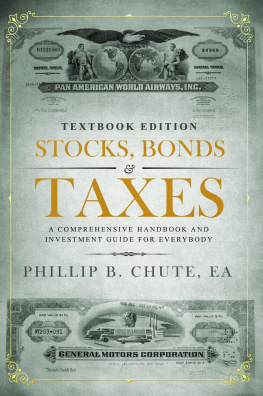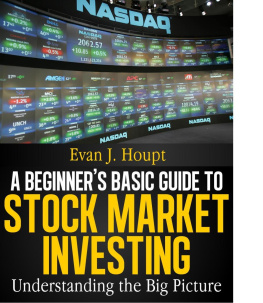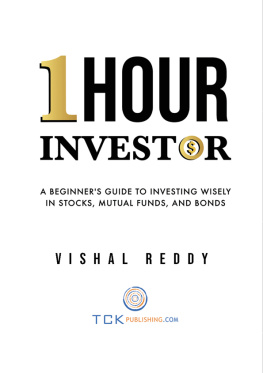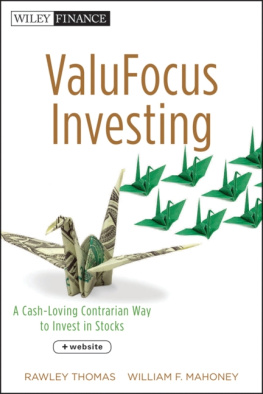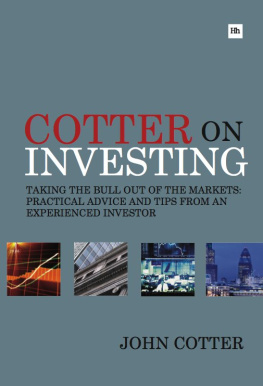STOCKS, BONDS
& TAXES
A Comprehensive Handbook and Investment Guide for Everybody
Textbook Edition
PHILLIP BRUCE CHUTE, EA
This publication is to provide accurate and authoritative information in regards to the subject matter covered. The reader should understand that the publisher is not engaged in rendering legal, accounting, or other professional service. If legal or other expert assistance is required, the services of a competent professional should be sought.
All rights reserved. No part of this book
may be reproduced or used in any manner without
written permission of the copyright owner,
except the use of quotations in a book review.
For more information, email:
Copyright 2020 as
Stocks, Bonds, and Taxes
by Phillip B. Chute
Textbook edition 2020
Editing: Leslie Adkison & Nenita Lariosa
Book design by:German Creative
Book Formatting:Sarah Dietz
ISBN 978-1-7328855-4-7
www.phillipbchute.com
DISCLAIMER
On December 22, 2017, President Trump signed the Tax Cuts and Jobs Act, which contained 115 new tax provisions effective in 2018. This publication will contain many of the new relevant provisions.
The book material is based on personal experiences, with a tip of the hat to Wikipedia, Wall Street Journal, Investopedia and the myriad of state and federal government agencies and public information sources available today.
Because Federal and State taxes are a constantly moving target, professional counsel is recommended before making financial decisions.
The Author, Phillip Bruce Chute, EA
ABOUT THIS BOOK
This book is a compilation of investment information about securities, stocks, bonds, insurance, and essentials for the typical investor who needs a better understanding of the mechanics of New Yorks Wall Street and the insurance giants of New England. The format is broken down into the type of investment, commissions or cost, FINRA compliance law, tax laws, successful strategies, charts and graph aids, trading tips, pros and cons of specific investment and financing. Notice the term law, the foundation of all transactions, which must conform to legal parameters to be valid, and the tax effects and consequences. A glossary provides practical reference information. The scope of this book is quite broad and reaches beyond the normal investment situation encountered by an investor meeting with his/her financial planner. It is not a book of theory, but of real-life practice.
The purpose of this book is to provide the intelligent reader with enough information to be at least as knowledgeable as the stockbroker or insurance agent he/she is dealing with, and to be capable of conducting personal planning and trading with confidence. It has been the experience of the author that most people are rightly overwhelmed by the limited information presented to them by the sophisticated and highly educated sales people making presentations. Informed people who can resist sales pressure enough to comprehend what they are doing make the best investment decisions. Good investments are made when the buyer can put the sales pitch person on hold until he/she can reference a book such as this to further understand the implications of these important decisions. Because the nature of money and finance is complex and always exposed to risk, an attempt is made to simplify the text and real examples are given.
This book is not designed by the author to show you how to be rich instantly with your savings. He intended to show you the risk, costs, and mechanics of investments so you will understand your true potential in the investment business and make money the old-fashioned wayby being smart and informed. As an insurance salesperson once told him, Sell the sizzle, not the steak.
There are also dozens of success stories, not only of dollars and entrepreneurs, but also of individuals and their successes. Included are reflective examples of our powerful American economy and how the chess pieces of character and energy move together. Success is never without hard work and diligence to a sound goal, as these real-life strategies testify.
Are worm farms a good investment? Read the real-life Horror Stories and find out what investors did with them. Also, find out why new huge tractor-trailer rigs were surprisingly delivered to the front doors of wealthy investors, why the investors high yield Mexican bank bonds were unredeemable, or about the investor who bought unsalable common stocks in a large Long Beach bank, or why the millionaire bought worthless tax-exempt muni (municipal) bonds, etc. All investments are tax-related and focused on the Tax Code because it has become the center of all economic decisions.
Finally, questions are provided at the end of each chapter so you can practice applying your knowledge. The Application Exercises include multiple-choice and True-False items. If you are an educator a copy of the answer key can be ordered by contacting the author on www.stocksbondsandtaxes.
ABOUT THE AUTHOR
Phillip Bruce Chute is an Enrolled Agent, tested, licensed, and appointed by the IRS directly. He has prepared and supervised over 25,000 tax returns over 30 years or more. These are individual, business, fiduciary, estate, corporate, partnership, and many kinds of business entities. He has also represented clients in hundreds of audits including payroll and sales tax, secured and unsecured property taxes, workmans compensation, Labor Board, IRS and FTB office and field individual taxes, corporate taxes, and estate taxes.
Phil, as his clients respectfully address him, obtained his first securities license to protect his clients, as a direct result of witnessing terrible investment machinations d one by financial salespeople. A s a focused, committed financial salesperson, business consultant, tax expert, and as a securities principal supervising other brokers by the National Association of Security Dealers (now FINRA) tough rules, he has become an authority in all aspects of finance.
Aside from holding the highest credential award by the IRS by passing the Special Enrollment Examinations to become an Enrolled Agent, the author served concurrently as a supervising principal of the Office of Supervisory Jurisdiction and branch manager of various security brokerage firms for twenty years. For five years, he was the President and Registered Financial Advisor of Pacific Financial Advisors Corporation. An author of AmericanIndependent Business, a college-level textbook on small businesses and entrepreneurship, Phillip B Chute is listed in the Whos Who Marquis book on successful business professionals and won National and International writing awards for Kiwanis International.
TABLE OF CONTENTS
part 1: equities
PART 2: BONDS
PART 4: OTHER INVESTMENTS
g
MORE
SECTION I
INVESTMENTS
PART ONE
EQUITIES
Equity capital is the stockbroker term for corporate stock issued for cash. Thus, it is outside ownership in the corporation. This interest, usually expressed as voting common shares, is sold through various financial firms that are authorized through the Securities Exchange Commission ( SEC ) . Equities are the common currency of the average citizen today. Stocks are owned by almost all pension/retirement plans, in individual portfolios, and in everyday economic discussions. Several television stations are devoted full-time to live trading and economarket discussions. Economic events such as a large company layoff or merger are transformed into headlines of stock market movements that appear in newspaper headlines or bylines on the hourly news. Equities are the stock market and woven into the fabric of daily American life. Although the top 5% of the population owns 90% of all wealth, there is enough left for trading, investment, pensions, and speculation by the typical middle-class citizen today.
Next page
